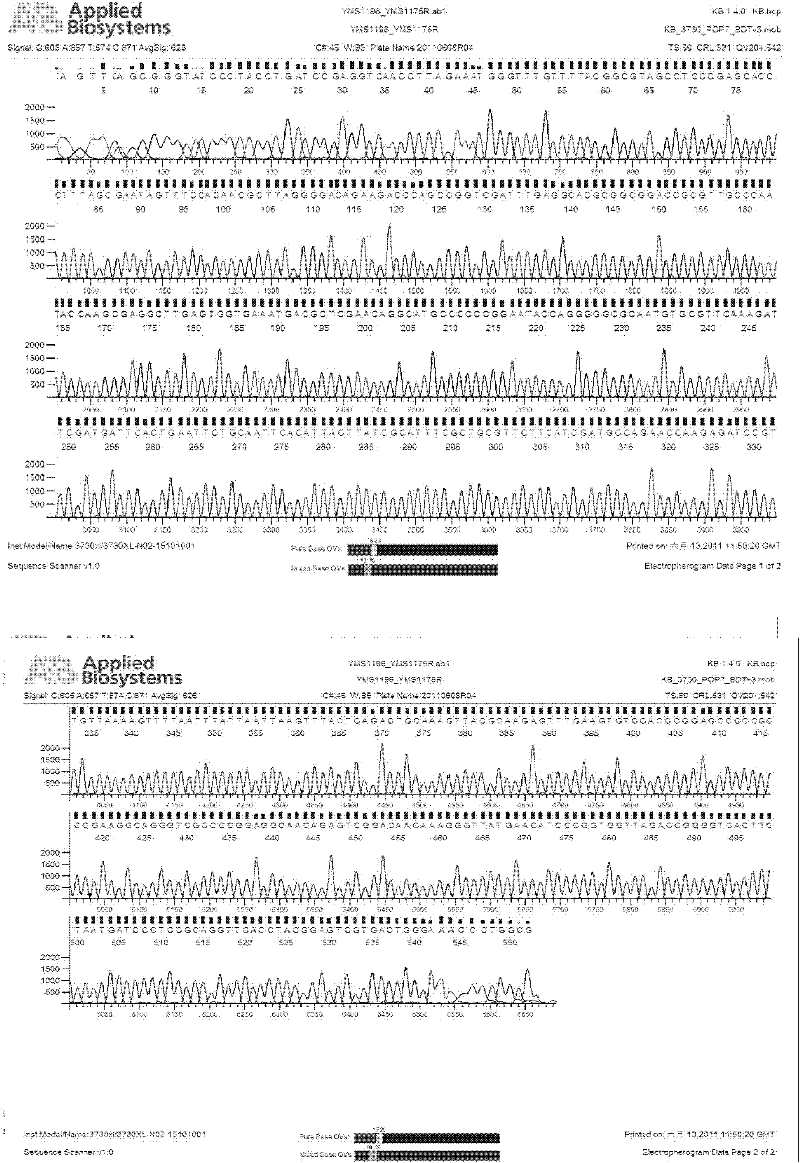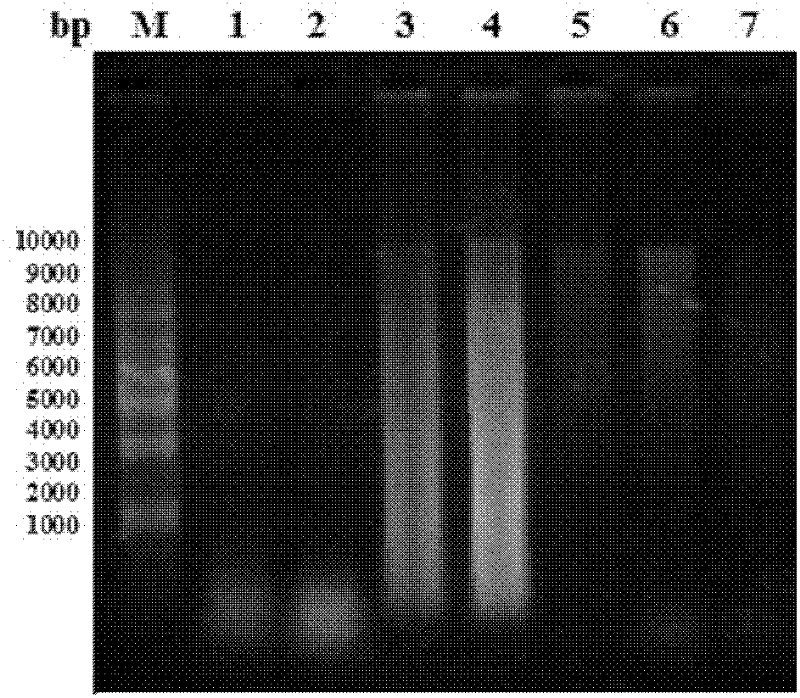Phenol degradation fungus and application thereof
A technology of phenol degradation and fungi, applied in the field of environmental microorganisms, to achieve strong environmental tolerance and clean pollution effects
- Summary
- Abstract
- Description
- Claims
- Application Information
AI Technical Summary
Problems solved by technology
Method used
Image
Examples
Embodiment 1
[0027] Screening and identification of phenol-degrading fungal strains
[0028] Inorganic culture medium (mg / L): NaNO 3 2.000 g, K 2 HPO 4 1.000 g, KCl 0.500 g, MgSO 4 .7H 2 O 0.500 g, FeSO 4 .7H 2 O 0.010 g;
[0029] Screening plate medium (mg / L): NaNO 3 2.000 g, K 2 HPO 4 1.000 g, KCl 0.500 g, MgSO 4 .7H 2 O 0.500 g, FeSO 4 .7H 2 O 0.010 g, phenol 0.200 g, agar 18.000 g, H 2 O1000mL;
[0030] Storage medium (mg / L): 200.0 g potatoes, 20.0 g sucrose, 0.100 g phenol, 18.00 g agar, H 2O 1000 mL;
[0031] PDA culture medium (mg / L): potato 200.0 g, sucrose 20.0 g, agar 18.00 g, H 2 O 1000 mL.
[0032] Take 5.0 g of sediment from the East China Sea near Ningbo (longitude 125-128°, latitude 32-35°) in a 250 mL Erlenmeyer flask containing 45 mL of sterile water, shake at 28°C and 150 rpm for 3 h, then statically Set aside for 30 min, transfer 5 mL of the supernatant to 45 mL of inorganic medium containing phenol (100 mg / L), place the Erlenmeyer flask at 28°C,...
Embodiment 2
[0044] Biodegradation of Phenol by Strain PHDE-1
[0045] The strain PHDE-1 was inoculated into 100 mL of sterile screening culture medium containing 100 mg / L phenol, and cultured at 28°C with shaking at 150 rpm for 2 days until the logarithmic phase of growth was used as the seed solution.
[0046] Take 8×1 mL of the above seed solution and inoculate them into 100 mL of sterile phenol containing 200 mg / L, 400 mg / L, 600 mg / L, 800 mg / L, 1000 mg / L, 1200 mg / L, 1400 mg / L, respectively. L, 1600 mg / L simulated wastewater, at 28 ° C, 150 rpm shaking culture, sampling every day, using 4-aminoantipyridine as color reagent, 510 nm colorimetric method to quantitatively determine the concentration of residual phenol, the result show in Figure 7 middle.
[0047] When the phenol content in the simulated wastewater is less than 800 mg / L, phenol can be completely degraded after 10 days; and when the phenol content is 1000 mg / L and 1200 mg / L, the degradation rate of phenol reaches 96% aft...
Embodiment 3
[0049] Biodegradation of Phenol by Strain PHDE-1 at Different pH
[0050] The strain PHDE-1 was inoculated into 100 mL of sterile screening culture medium containing 100 mg / L phenol, and cultured at 28°C with shaking at 150 rpm for 2 days until the logarithmic phase of growth was used as the seed solution.
[0051] Take 6×1 mL of the above seed solution, inoculate them into 100 mL of sterile simulated wastewater containing phenol (800 mg / L) and pH 5.5, 6.0, 6.5, 7.0, 7.5, 8.0 respectively, shake at 28°C and 150 rpm Shake culture for 10 days, using 4-aminoantipyridine as color reagent, 510 nm colorimetric method to quantitatively determine the concentration of residual phenol, the results show that in Figure 8 middle.
[0052] Strain PHDE-1 can biodegrade phenol in a wide pH range, but the degradation rate is affected by pH. At pH 6.5-7.0, the degradation rate of phenol by strain PHDE-1 can reach the maximum.
PUM
 Login to View More
Login to View More Abstract
Description
Claims
Application Information
 Login to View More
Login to View More - R&D
- Intellectual Property
- Life Sciences
- Materials
- Tech Scout
- Unparalleled Data Quality
- Higher Quality Content
- 60% Fewer Hallucinations
Browse by: Latest US Patents, China's latest patents, Technical Efficacy Thesaurus, Application Domain, Technology Topic, Popular Technical Reports.
© 2025 PatSnap. All rights reserved.Legal|Privacy policy|Modern Slavery Act Transparency Statement|Sitemap|About US| Contact US: help@patsnap.com



